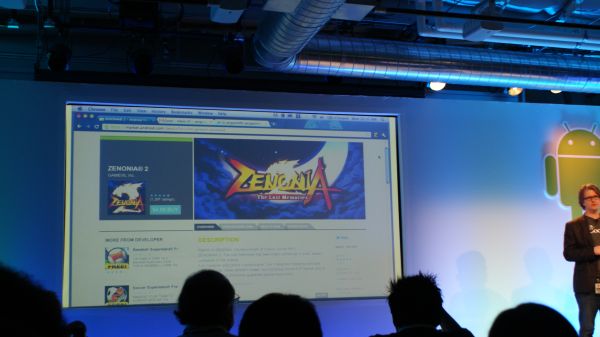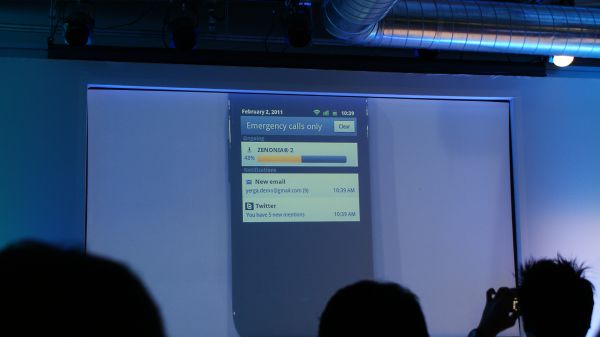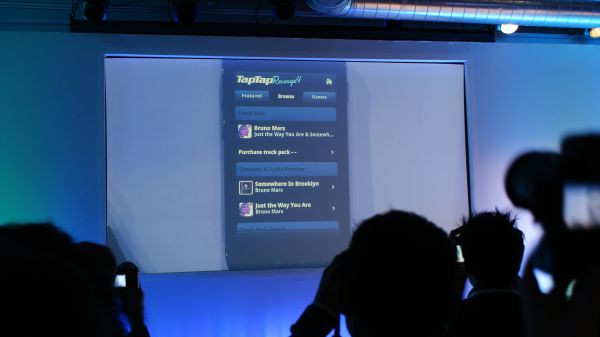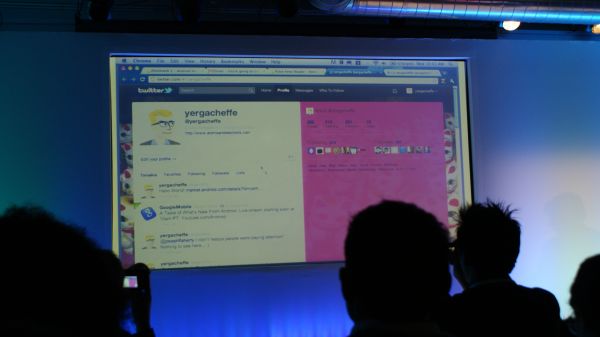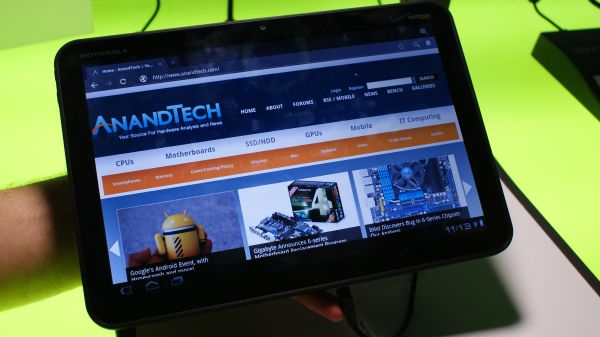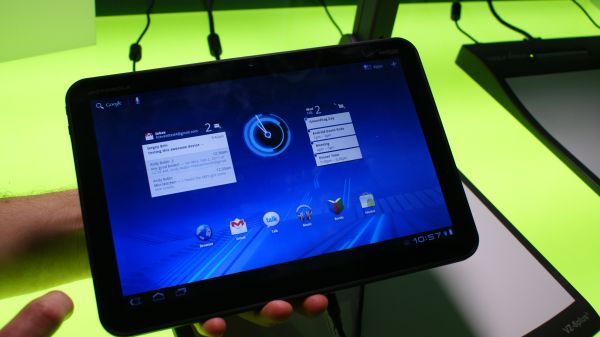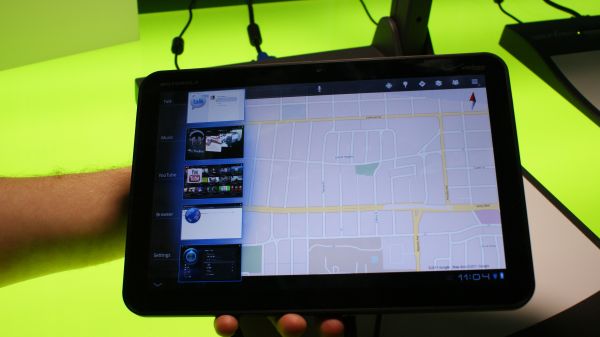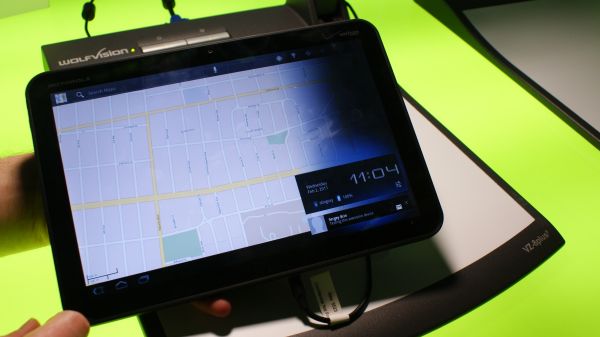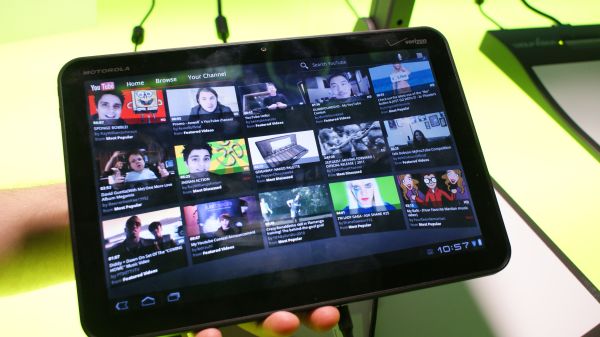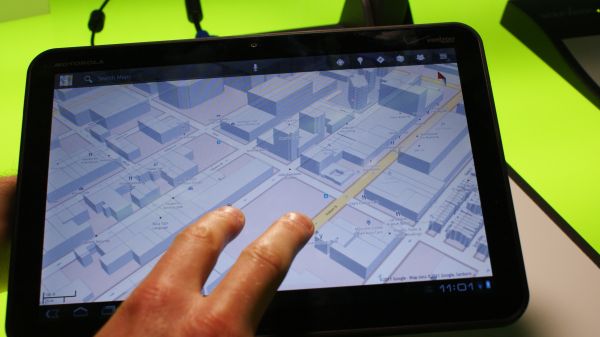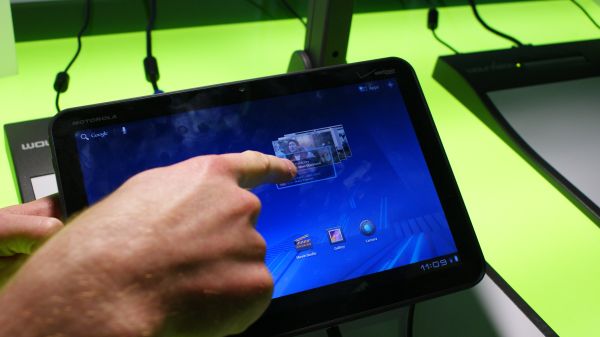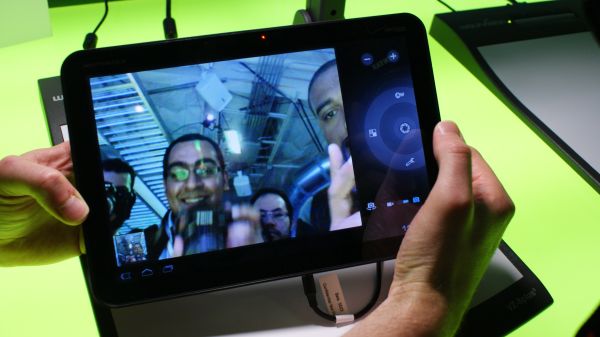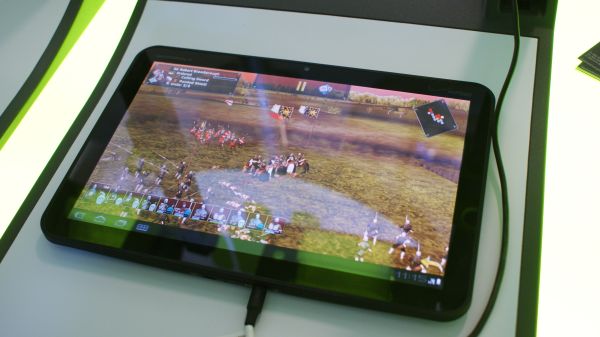
Original Link: https://www.anandtech.com/show/4150/googles-android-event-analysis
Google's Android Event Analysis
by Mithun Chandrasekhar on February 2, 2011 4:26 PM ESTToday's Android event had just one real announcement; the Android Marketplace webstore (which is Live at market.android.com). The rest of it was just a Honeycomb/Motorola Xoom show-and-tell, with various Google-partners coming on stage and showing their apps running on the Honeycomb platform. As such, this article covers the details of the Android Marketplace webstore and other updates first, followed by impressions gathered during the Honeycomb/Xoom hands-on.
So yes, the main announcement today is the fact that Android Marketplace is now going places! Google was talking about cloud services, how it is playing an increasingly important role in the Android eco-system and how smartphones, tablets and other mobile devices would benefit from cloud service integration. Nothing new or particularly exciting here, except that Andy Rubin did drop hints of such integration coming over to other Google platforms (such as Google TV) some time in the future.
An app purchase on the Android Marketplace web store gets pushed to the Nexus S
Back to the Android Marketplace; it is now possible for users to browse the Android Marketplace from the comfort and convenience of their desktop browsers, make app purchases in the browser and have the app pushed to their Android mobile device. It is as simple as that in practice as it is in idea. If the application you are planning on purchasing is free, you can actually get through with the process in a single click. Purchasing a paid app would require the additional step of entering your payment information. During the demo, an app purchase made in the browser was pushed to the Nexus S phone within a couple of seconds. Apart from purchases, users can also share apps from the webstore. Again, nothing revolutionary, but effective in it's simplicity and execution.
Disney Mobile demonstrating in-app purchases in Tap Tap Revenge 4
It's possible to share applications via the Android Marketplace web store (Twitter example shown here)
But the Android Marketplace updates weren't just end-user oriented. Google realizes the importance of developer support and keeping developers happy will certainly help Android maintain its momentum forward. To this effect, with the introduction of the web store, Google has given the developers more control over how they can promote and monetize their applications. Developers can make use of high-resolution banners and youtube video links on their store front. Plus, the web store will show other apps the same developer has to offer, thereby making an attempt to reduce the bounce rate. Updates have also been made to the payment system with more leeway given to the developer on buyer currency support. Unlike the previous set-by-Google rates, developers can explicitly choose what rate they may want to charge foreign currencies, although they can fall back to the default Google rates if they choose to do so. This feature is going to roll-out gradually, with initial support for the US dollar only. Another big update on the monetization front is the support for in-app purchases. The developers can now sell 'packs', 'updates', 'maps' and other add-ons to their application, without the user having to leave the app. This will certainly boost app development for Android and provide developers the incentive to continue supporting and upgrading their existing applications for longer periods. Disney Mobile was at the event to show off some of the applications they have ported over for to Android and their 'Tap Tap Revenge' application seemed to make good use of the in-app purchase system, wherein the user can purchase additional soundtracks from within the game.
Nothing particularly exciting here, but all in all, worthy updates to the Android eco-system.
Google teased us (actually, more like flooded!) with what Honeycomb had to offer and multiple tablet announcements at CES last month. Today was more of a detailed look at what Honeycomb was about and what new features and paradigms it brings to the tablet form-factor. Also, unlike the Xoom tablets at CES which just looped demo videos, we got to see Xoom's running Honeycomb firsthand, although it was a 'supervised' hands-on.
I confirmed this with Google; Honeycomb, atleast in the current form, will not be coming to non-tablet devices. But that being said, I was told that features from Honeycomb will definitely trickle down to smartphone OSes and Google actually built Honeycomb with this in mind. I will elaborate a bit more on this later, but after seeing the demos, I can already make a sizeable list of Honeycomb features that Google needs to bring over to the smartphone version of Android ASAP.
Honeycomb + Xoom is Google's straight up answer to the iOS + iPad. Yes, although Google didn't say this openly or brand the Xoom as a 'Nexus' device, talking to people around did confirm my initial impressions that the Xoom is infact the halo device for Honeycomb and Google did work quite closely with Motorola on it. I will mainly be talking about Honeycomb and what it brings to the party; you can find specific information about the Xoom itself here, and here. Plus, we'll go more in-depth when we review the Xoom later.
Honeycomb (Android 3.0 from here on) is a pretty massive departure from previous iterations of Android. It is quite clear that Android 3.0 is built from the ground-up keeping the tablet form-factor and the resulting use-cases in mind. It makes very good use of the screen real estate at its disposal. The widgets displayed on the homescreen aren't just static snippets of the app they belong to; the mail widget for example, let's you sift and scroll through your inbox without having to enter the app itself. It's great to have your calendar, inbox and contact list, all displayed and available for use in the same location.
(Top left) Widgets on the homescreen, (Top right) the multitasking pane, (Bottom) Notifications
The second major update is to the multi-tasking aspect of Android. While Android has always supported multi-tasking in some form, it was very similar to the way Symbian handles it; the OS let's you know what other apps are running in the background if you explicitly ask it. As a result, your usage behavior makes you switch apps only when you have to, not when you want to. With 3.0, Android brings multitasking to the forefront much the same way webOS does. Pressing the multitask icon on the bottom left corner of the screen brings up a verticle pane of mini-windows, each representing an app (similar to the cards in webOS). Using this pane, you can easily get in and out of apps running in the background. This is a definite and marked improvement over how Android handles multitasking currently and is one of the features that hopefully gets ported over to Android on smartphones.
The next feature that Android brings along in its latest iteration is a redesigned (and less obtrusive) notifications system. You now get notification pop-ups in the bottom right corner of the screen which you may or may not choose to acknowledge/act upon. You don't get interrupted with a jarring pop-up in the middle of the screen. And the features demoed seemed to make good use of the notifications in Android 3.0. This is another feature that should definitely be ported over to smartphones.
A lot is also happening behind the scenes in Android 3.0. I kept mentioning on the previous page that some of the features from Android 3.0 will eventually make it over to smartphone-versions of Android. This will be enabled because Google is heavily pushing code reusability (or 'fragments' as they called it) with Android 3.0. Not only will this enable features to be easily adapted for future versions of the OS, but features can also be reused between applications. On a related note, Google emphasized that existing Android apps will work on Android 3.0 devices without requiring any code modifications. They used the 'Fruit Ninja' app to demo this. While this is great news for developers who don't want to redevelop the same app for 3.0 devices, what I didn't get a clear answer for was about applications targeted specifically at Android 3.0. From the looks of it, I wouldn't be wrong if I said that in such a case, the developer will in fact have to make two, slightly different versions of the app.
(Top left) YouTube app, (Top right) Google Maps, (Bottom left) stack transitions, (Bottom right) Video chat
Google has also put in place a new graphics engine. Dubbed 'Renderscript', both 2D and 3D graphics are fully hardware accelerated in Android 3.0. This was quite visible in the demos and hands-on where the Xoom easily transitioned between screens and applications without much trouble. The bookstore, YouTube and Google Maps applications seemed to make the best use of the new engine. Speaking of Maps, Android 3.0 does come with a new version of Google Maps. Apart from bringing in features such as check-in, another big feature is better map caching. Although the intial impression given to me was that it is a valid enough alternative to offline mapping (where map data is stored in local memory), upon testing I realized that it very much needs an active data connection of some sort to work. It's just that because of better vector data compression, the application can now better cache areas around the one you are browsing. In my experience, it was a couple of blocks in each direction at best.
Android 3.0 builds upon the 'Stagefright' media framework introduced in Android 2.2. With the more robust rendering engine running underneath, the framework is able to make good use of the underlying hardware and includes features such as HLS (HDTV Live Streaming), built right into the OS. A demo of the CNN app streaming a live video feed was shown, although in all honesty, the quality was worse than standard YouTube videos. Video chat functionality is also now included as a part of Android 3.0.
(Left) Live video stream in the CNN app (Right) Great Battles : Medieval
Google did also show a couple of game demos, including one of a direct XBOX 360/Playstation 3 port. Although Monster Madness (War Drum Studios) was impressive in that it was (supposedly) a direct port of a current-gen console game, it wasn't particularly impressive in itself. Another game, Great Battles : Medieval looked more impressive and was definitely playable, but I could still pick up not-so-smooth transitions while panning and zooming. Nevertheless, it seems like both the game and Android 3.0 were in their 'near-final' forms.
Final Impressions
Honestly, I came a bit disappointed from the event today. But that was more because of the fact that I had very high expectations off of it, than the event being a let down in itself. Another reason may have been that Google had already gone about trumpeting Android 3.0 and the Xoom earlier on at CES, not leaving a lot to the imagination for today's event.
That being said, Android 3.0 does mark a very important milestone for Google. Although always having been feature rich, usability was never one of Android's forte and you had to be a bit of a geek to try and figure your way around some it. But with version 3.0, Android has finally moved into the current-gen of mobile operating systems when it comes to usability and cloud integration. It seems like Google has done its homework and has set the stage up quite well for itself for a real entry into the tablet arena.

